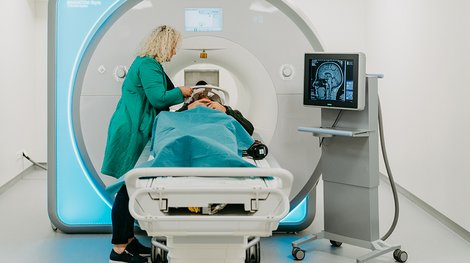Europe-wide standard for radiotherapy

An international research team headed by the medical technologist Professor Christoph Hoeschen from Otto von Guericke University Magdeburg is developing quality and safety standards that will be applied across Europe for the use of ionizing radiation in the diagnosis and treatment of cancer. In the i-Violin project, ten partners from nine European countries under the scientific leadership of the research team in Magdeburg are planning to develop a European database of patient diagnostic and therapy data and treatment recommendations by 2024.
The database will establish comparable standards for the use of ionizing radiation across different countries and help physicians to reduce patients' exposure to radiation to a reasonable level, to optimize the treatment of each individual patient and, as a result, to improve the safety and quality of the care of cancer patients throughout Europe.
At the heart of the research project lies the question of the extent to which the quality of the diagnostic imaging, for example in computer tomography scans, is in direct relation to the dose administered and the success of the radiotherapy treatment and of how this quality can be improved to allow patients to be treated with the lowest possible level of side effects and long-term impacts for each individual. "The major qualitative and quantitative inequalities in oncological imaging practices across Europe are clear from a number of projects and surveys carried out over recent years," says Christoph Hoeschen from the Chair of Medical Systems Technology. "We aim to address these disparities, which also result in different levels of treatment success, and to ensure that the treatment of cancer patients across Europe is not only consistent, but consistently better."
To achieve this goal, in the first step a software system developed in preliminary projects will be used to assess the quality of computer tomography images in the five European hospitals involved. Later, the process, which was developed in Magdeburg as well as elsewhere, will be introduced into as many European hospitals as possible. The researchers are working with the clinicians to determine whether there is a patient-specific relationship between the image quality and the subsequent radiotherapy. "Ultimately, we aim to discover whether a better quality image and a more accurate assessment of the patient data can lead to more personalized and more effective doses of radiation and therefore to better protection against radiation as a result of the lower exposure to radiation or whether optimum treatment and lower exposure is also possible with images of adequate quality."
The i-Violin project is being funded by the EU4Health program and supports the goal of Europe’s Beating Cancer Plan to ensure high standards of cancer treatment. In addition, the SAMIRA action plan and the strategic research agenda of the ESR EuroSafe Imaging and EURAMED programs are also reflected in i-Violin. The project partners are the European Institute for Biomedical Imaging Research, Otto von Guericke University Magdeburg, the University Medical Center of Johannes Gutenberg University Mainz, the Polytechnic Institute of Coimbra in Portugal, the University of Crete, Greece, the Clinical Hospital Dubrava, Croatia, the University Medical Center Ljubljana, Slovenia, KU Leuven in Belgium, University College Dublin and the National University of Ireland, Dublin plus the Finnish Radiation and Nuclear Safety Authority.
Source: Otto-von-Guericke University

